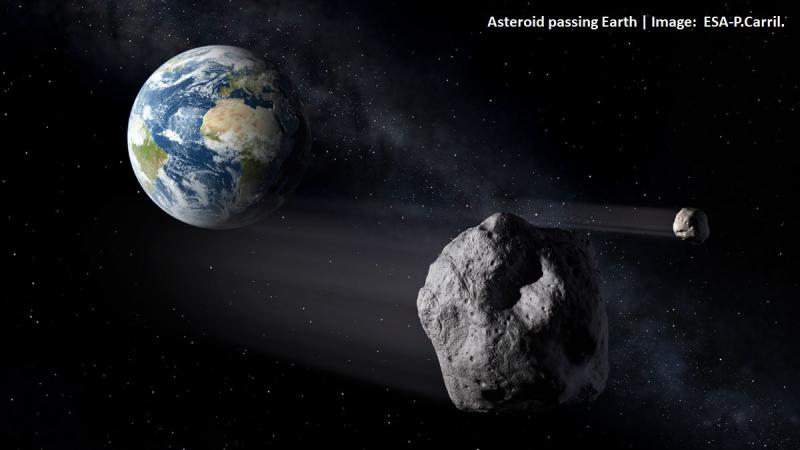
In 1908, a meteoroid (a small asteroid) exploded in the atmosphere near the Stony Tunguska River in Eastern Siberia, flattening over 2000 square kilometres of forest. Luckily, the region was very thinly populated, and there were no casualties. But, our Earth is not always that fortunate! Billions of years ago, our planet is thought to have been struck by many such asteroids, creating a dent on its surface.
So, what exactly is an asteroid and where does it come from? The word ‘asteroid’ means ‘star-like’ in Greek. Asteroids were so named because they appeared to be points of light on the sky like stars. However, soon astronomers discovered from their motion across the sky that they are not stars, but have planet-like orbits.
Most asteroids orbit the Sun in the large space between the orbits of Mars and Jupiter, known as the asteroid belt. Some asteroids are predominantly made of silicon, while others are metal-rich, containing nickel and iron. Interestingly, some asteroids contain small quantities of amino acids (building blocks of proteins) and other organic compounds, further study of which may provide clues about the origin of life.
Asteroids are essentially the rubble left over from the formation of the Solar System nearly five billion years ago. There are about one and a half million asteroids larger than one kilometre in diameter, and millions of smaller ones. Planets in our Solar System are thought to have formed from such smaller objects merging and sticking together. However, in the asteroid belt, gravitational forces from Jupiter, the heaviest planet in our Solar System, have prevented these asteroids from merging together into planets.
Occasionally, asteroids can escape from the asteroid belt and end up on a collision course with the Earth. If an asteroid less than a few meters across hits the Earth, it will explode in the atmosphere. However, larger objects can form huge tsunami-like waves if they land in the oceans, or craters, like those on the moon, if they come down on land. In both cases, considerable damage can result.
The 30th of June, each year, is observed at the International Asteroid Day, to mark the Tunguska event of 1908. The next time you see a ‘shooting star’, which is a meteor burning in the atmosphere, perhaps you may want to wonder about its origins and think about its long journey to our atmosphere!





